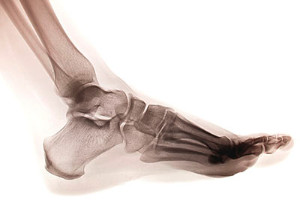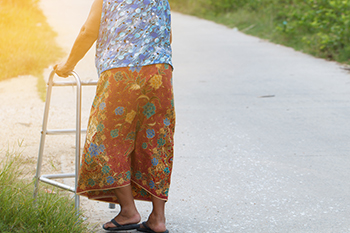Manalapan
(732) 845-0100
Manalapan (732) 845-0100

Big toe joint pain can be caused by various conditions, like arthritis, bunions, gout, sesamoiditis, or turf toe. These conditions can lead to stiffness, swelling, and a grinding sensation. Even though the toe joints are small, they support a significant amount of body weight and play a crucial role in foot function. The most common form of arthritis affecting the big toe is osteoarthritis, which results from tissue erosion between bones and joints. It makes it difficult to straighten the toe and causes pain while standing or walking. Bone spurs can also develop on the top of the big toe, leading to pain, particularly when wearing shoes. Bunions, characterized by a large bump on the joint of the big toe, are deformities that cause the toe to shift towards the smaller toes. They can be caused by things such as genetics, tight shoes, or rheumatoid arthritis. Finding comfortable shoes becomes challenging, and wearing them can be painful. Bunions result in redness, irritation, and swelling on the side of the big toe. Gout, another type of arthritis, occurs when uric acid builds up in the blood, forming crystals that deposit into a joint, often affecting the big toe joint. Uric acid is a waste product that accumulates when purines, found in certain foods like red meat, seafood, and alcohol, are broken down. Failure to eliminate uric acid through the kidneys can lead to gout, causing intense pain, swelling, redness, and heat in the joint. Since big toe pain can have various causes, it is suggested that you consult a podiatrist for an examination, a diagnosis, and the appropriate treatment options.
Toe pain can disrupt your daily activities. If you have any concerns, contact Dr. Charles Marchese of Manalapan Foot & Ankle. Our doctor can provide the care you need to keep you pain-free and on your feet.
What Causes Toe Pain?
Most severe toe pain is caused due to a sports injury, trauma from dropping something heavy on the toe, or bumping into something rigid. Other problems can develop over time for various reasons.
Toe pain can be caused by one or more ailments. The most common include:
When to See a Podiatrist
Diagnosis
In many cases the cause of toe pain is obvious, but in others, a podiatrist may want to use more advanced methods to determine the problem. These can range from simple visual inspections and sensation tests to X-rays and MRI scans. Prior medical history, family medical history, and any recent physical traumatic events will all be taken into consideration for a proper diagnosis.
Treatment
Treatments for toe pain and injuries vary and may include shoe inserts, padding, taping, medicines, injections, and in some cases, surgery. If you believe that you have broken a toe, please see a podiatrist as soon as possible.
If you have any questions please feel free to contact our offices located in Manalapan, NJ, and Staten Island, NY . We offer the newest diagnostic tools and technology to treat your foot and ankle needs.

Having tired muscles in the feet can cause a stress fracture to occur. These muscles can become fatigued by increasing speed and distance too quickly while running, which may cause the inability to absorb shock. The stress can be placed on the foot bones, possibly leading to a stress fracture. A common symptom of a stress fracture can consist of gradual pain while walking or running, which may decrease when activity is temporarily stopped. The area may also feel tender when touched, and this may propel patients to seek medical treatment. This often begins with resting the affected foot, and many people choose to wear a protective boot or cast that can encourage mobility. The average recovery time is between six and eight weeks, and it may help to pursue non-impact activities. If you have foot pain, and fear you may have a stress fracture, it is suggested that you confer with a podiatrist who can accurately diagnose and treat this condition.
Stress fractures occur when there is a tiny crack within a bone. To learn more, contact Dr. Charles Marchese from Manalapan Foot & Ankle. Our doctor can provide the care you need to keep you pain free and on your feet.
How Are They Caused?
Stress fractures are the result of repetitive force being placed on the bone. Since the lower leg and feet often carry most of the body’s weight, stress fractures are likely to occur in these areas. If you rush into a new exercise, you are more likely to develop a stress fracture since you are starting too much, too soon. Pain resulting from stress fractures may go unnoticed at first, however it may start to worsen over time.
Risk Factors
Stress fractures do not always heal properly, so it is important that you seek help from a podiatrist if you suspect you may have one. Ignoring your stress fracture may cause it to worsen, and you may develop chronic pain as well as additional fractures.
If you have any questions, please feel free to contact our offices located in Manalapan, NJ, and Staten Island, NY . We offer the newest diagnostic and treatment technologies for all your foot care needs.

An ingrown toenail happens when the nail grows into the skin instead of over it. Common reasons for this to occur can be from wearing shoes that do not fit correctly, or if there is a family history of it. Additionally, people who trim their toenails incorrectly or have injured their toes may develop an ingrown toenail. People who have diabetes can incur poor circulation, which may inhibit normal nail growth, thus increasing the possibility of getting an ingrown toenail. Mild relief may temporarily be found when the affected foot is soaked in warm water, making it easier to gently pull the skin away from the nail. Preventive techniques can include wearing shoes that fit correctly and keeping the feet as dry as possible. If you have developed an ingrown toenail, it is strongly suggested that you consult a podiatrist as quickly as possible who can provide you with permanent relief and treatment options.
Ingrown toenails may initially present themselves as a minor discomfort, but they may progress into an infection in the skin without proper treatment. For more information about ingrown toenails, contact Dr. Charles Marchese of Manalapan Foot & Ankle. Our doctor can provide the care you need to keep you pain-free and on your feet.
Ingrown Toenails
Ingrown toenails are caused when the corner or side of a toenail grows into the soft flesh surrounding it. They often result in redness, swelling, pain, and in some cases, infection. This condition typically affects the big toe and may recur if it is not treated properly.
Causes
You are more likely to develop an ingrown toenail if you are obese, have diabetes, arthritis, or have any fungal infection in your nails. Additionally, people who have foot or toe deformities are at a higher risk of developing an ingrown toenail.
Symptoms
Some symptoms of ingrown toenails are redness, swelling, and pain. In rare cases, there may be a yellowish drainage coming from the nail.
Treatment
Ignoring an ingrown toenail can have serious complications. Infections of the nail border can progress to a deeper soft-tissue infection, which can then turn into a bone infection. You should always speak with your podiatrist if you suspect you have an ingrown toenail, especially if you have diabetes or poor circulation.
If you have any questions, please feel free to contact our offices located in Manalapan, NJ, and Staten Island, NY . We offer the newest diagnostic and treatment technologies for all your foot care needs.

Research has shown that approximately 25 percent of adults fall every year. Many of these people can experience consequences that can range from breaking a bone to the inability to complete daily activities as a result of having a fear of falling. Falling can happen from having an unsafe living environment, existing medical conditions, or a change in eyesight. There are simple methods that can be implemented which can help to reduce the number of falls. Installing grab bars in the toilet and shower area and using a non-skid bathmat are effective fall prevention techniques. Additionally, removing worn rugs and improving lighting in the household can make the home safer. Many elderly people choose to stretch and exercise daily, which is helpful in keeping the body strong, and possibly helping to prevent falling. If you would like additional knowledge about how falling can affect the feet and how to avoid this, it is suggested that you confer with a podiatrist who can offer you useful tips.
Preventing falls among the elderly is very important. If you are older and have fallen or fear that you are prone to falling, consult with Dr. Charles Marchese from Manalapan Foot & Ankle. Our doctor will assess your condition and provide you with quality advice and care.
Every 11 seconds, an elderly American is being treated in an emergency room for a fall related injury. Falls are the leading cause of head and hip injuries for those 65 and older. Due to decreases in strength, balance, senses, and lack of awareness, elderly persons are very susceptible to falling. Thankfully, there are a number of things older persons can do to prevent falls.
How to Prevent Falls
Some effective methods that older persons can do to prevent falls include:
Falling can be a traumatic and embarrassing experience for elderly persons; this can make them less willing to leave the house, and less willing to talk to someone about their fears of falling. Doing such things, however, will increase the likelihood of tripping or losing one’s balance. Knowing the causes of falling and how to prevent them is the best way to mitigate the risk of serious injury.
If you have any questions, please feel free to contact our offices located in Manalapan, NJ, and Staten Island, NY . We offer the newest diagnostic and treatment technologies for all your foot care needs.